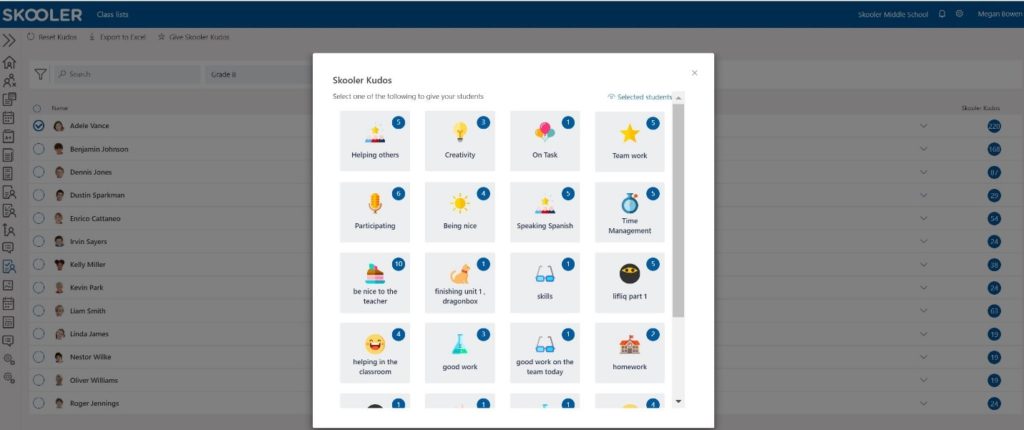The idea of ”growth mindset” began in the world of education and is now a rapidly emerging trend in the corporate world, as companies embrace its tenets as a way to foster innovation and build a resilient, learning-oriented company culture.
The concept was first introduced by Stanford University researcher Carol Dweck, whose pioneering research demonstrated that students who have a growth mindset – the belief that they can grow their talents and intellectual abilities through dedication and hard work – tend to perform better in school than their peers who believe these abilities are something you’re born with (a fixed mindset).
Dweck’s research has influenced a new generation of education scholars, spawned the creation of countless consultancies and set in motion new approaches and standards for teaching all over the world.
Over the past couple of decades, Dweck and other researchers have been observing how growth mindset is being fostered in educational environments. In many situations it has been a boon to education, helping students overcome preconceived notions about their own abilities and promoting higher performance across the board. In other cases, however, it has been less successful – particularly when teachers (and parents) have interpreted it too simply as praising students for their effort alone. Dweck calls this “false growth mindset.”
“Perhaps the most common misconception is simply equating the growth mindset with effort. Certainly, effort is key for students’ achievement, but it’s not the only thing. Students need to try new strategies and seek input from others when they’re stuck. They need this repertoire of approaches—not just sheer effort—to learn and improve,” said Dweck in her article “Carol Dweck Revisits ‘Growth Mindset.’”
While “effort praise” was seen by some as an improvement over “ability praise,” which puts the focus on a child’s innate abilities and tends to promotes a fixed mindset, a 2018 study made waves when it explained how “effort praise” alone can backfire – particularly among adolescents.
The study indicated that while praise can help students ages four to seven develop the belief that ability can improve with effort, older students in middle and high school tend to believe that when adults only praise their effort, it is a reflection of the adults’ low expectations about their abilities. This may have to do with the fact that middle and high schools often tend to be more focused on academic achievement, with class rankings and promotion of academic stars that reinforce the notion that some kids are just gifted and others are not.
So how can teachers ensure they’re not falling into the “false growth mindset” trap?
We’ve assembled some advice from top researchers on the subject along with some tools to help teachers support a growth mindset in the classroom (and in their own lives):
- Understand what growth mindset is and make it your own. A person who embodies growth mindset is someone who “embraces challenges, persists in the face of setbacks, takes responsibility for their words and actions and acknowledges that effort is the path toward mastery. It is basically the reason why ‘practice makes perfect,’” says Tchiki Davis, Ph.D. in her article 15 Ways to Build a Growth Mindset. Teachers who demonstrate a growth mindset themselves, naturally encourage their students to do the same.
- Reward learning and progress, not just effort. According to Dweck, “Unproductive effort is never a good thing. It’s critical to reward not just effort but learning and progress, and to emphasize the processes that yield these things, such as seeking help from others, trying new strategies and capitalizing on setbacks to move forward effectively.”
- Use self, peer and formative assessments. Skooler’s tools for self assessment and peer assessment and Microsoft Word’s review features provide opportunities for students to reflect on their own learning and learn how to seek input and help from others as part of their learning process. Skooler’s add-in for formative assessments helps teachers see where students are in their learning process and allows students to see their own progress and adjust as needed.
- Embrace mistakes as lessons. A fixed mindset can breed fear of failure and keep students from stretching and trying new things. “Tell students ‘I don’t want to know what you found easy, I want to know what you got wrong because that’s where the learning will be.’ This naturally gets students to think about how much they are learning and developing and will get them to think about what other strategies they could try,” says Mary Murphy, associate psychology professor and mindset researcher at Indiana University in Education Week.
- Help students explore their strengths. Everyone has core character strengths they can draw upon to help them overcome obstacles, learn and grow. Different from skills- or aptitude-based assessments, learning about a child’s character strengths helps teachers and students take a more positive and proactive approach to learning and growth. The VIA Institute on Character offers a free VIA Youth Survey character strength assessment based on Positive Psychology that helps students ages 10-17 learn more about the best parts of themselves and how to use them to reach their greatest potential. (Their 18+ adult character strength survey is free as well – if you’re a teacher and you don’t yet know your character strengths, this will be an excellent tool for your own growth as well.)
- Use kudos when appropriate. While the focus of growth mindset is largely on the learning process, the underlying message is one of continual learning. Skooler Kudos allow teachers to set awards for progress toward learning goals, helping students develop self-efficacy.

Skooler provides learning and feedback tools for student encouragement throughout the learning process. Combining these tools with a growth mindset philosophy opens up endless possibilities for learners, with easy access to resources, customized assignments and assessments that can be further customized to allow for rubric grading to ensure a student’s understanding of the subject matter. With the added benefits of having learning tools fully integrated with Microsoft Office, the variety of collaboration and communication tools foster productive back and forth communication between students and teachers (and parents too).
Lifelong learners are in demand
Helping students develop a growth mindset isn’t just about performance in school – it’s preparing them for success in their future careers. In her article What Having A “Growth Mindset” Actually Means in the Harvard Business Review, Dweck turns the growth mindset into a roadmap for adults in the corporate world. She says people with a growth mindset tend to achieve more because they worry less about looking smart and put more energy into learning.
“When entire companies embrace a growth mindset, their employees report feeling far more empowered and committed; they also receive far greater organizational support for collaboration and innovation,” Dweck says.
That’s why major corporations like Microsoft and Hewlett Packard are implementing companywide programs aimed at shifting their culture toward a growth mindset orientation.
Microsoft’s Corporate Vice President for Human Resources, Chuck Edward, says it’s a matter of “shifting from a culture of elite ‘know-it-alls’ toward a culture of ‘learn-it-alls’ who see challenges as opportunities.” He says that growth mindset is how the company is “future-proofing our workforce.”
We are all on a learning path throughout our lives. Perhaps one of the best things about growth mindset is that it continually stokes the idea that “we haven’t gotten there yet,” which helps us keep a youthful attitude as we grow older. An educational environment that encourages growth mindset from the earliest years of school not only helps them achieve more, it prepares students for a more rewarding life enriched by learning.
